
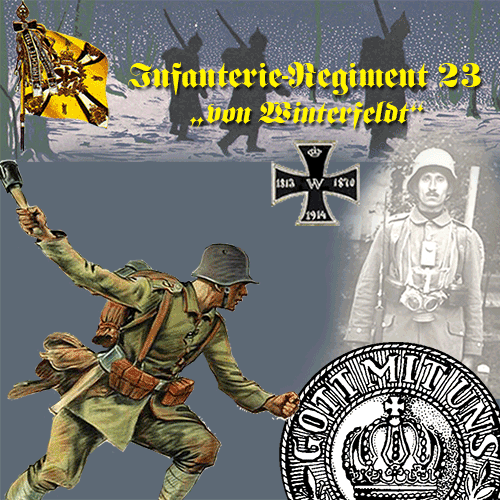
M.1866 Marschstiefel oder M.1901 Schnürschuhe
Gamaschen | Rolling the Gamaschen (puttee)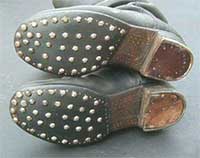
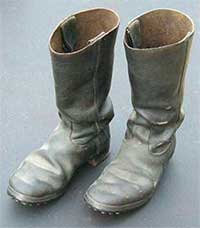 (March Boots or Ankle Boots)—Often referred to as „Knobelbecher“ (Dice-Shakers) by the Frontsoldat, the M.1866 Marschstiefel should be of brown or black leather. A rough side out finish was more common on wartime boots than a smooth side out finish; therefore, a rough side out finish is preferred. The Marschstiefel should be at least 14" tall, with single or two piece insteps. The Marschstiefel also must have seams up the side of the boot, as this is exhibited on original issue Marschstiefel. Square, boxed or pointed toes are unacceptable, as are rubber heels and soles.
(March Boots or Ankle Boots)—Often referred to as „Knobelbecher“ (Dice-Shakers) by the Frontsoldat, the M.1866 Marschstiefel should be of brown or black leather. A rough side out finish was more common on wartime boots than a smooth side out finish; therefore, a rough side out finish is preferred. The Marschstiefel should be at least 14" tall, with single or two piece insteps. The Marschstiefel also must have seams up the side of the boot, as this is exhibited on original issue Marschstiefel. Square, boxed or pointed toes are unacceptable, as are rubber heels and soles.
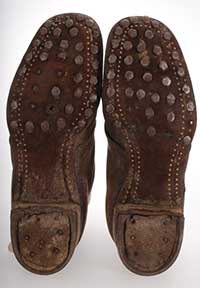
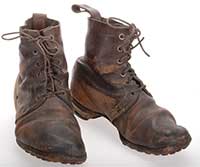 The M.1901 Schnürschuhe (ankle shoes) should lace well up onto the ankle. On both types of boots and shoes the soles shall be of leather and hobnailed. Heels must also be made of leather and set with hobnails or horseshoe plates. It should also be noted that French ankle shoes and British “ammunition boots” were widely used by German troops, therefore the wearing of either is most acceptable for members of Inf.Rgt. 23.
The M.1901 Schnürschuhe (ankle shoes) should lace well up onto the ankle. On both types of boots and shoes the soles shall be of leather and hobnailed. Heels must also be made of leather and set with hobnails or horseshoe plates. It should also be noted that French ankle shoes and British “ammunition boots” were widely used by German troops, therefore the wearing of either is most acceptable for members of Inf.Rgt. 23.
Gamaschen
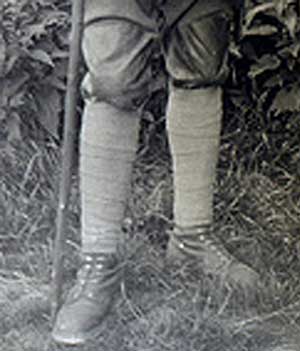
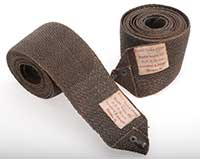 (Puttees)—Members wearing Schnürschuhe should also wear puttees or „Gamaschen“ made of web or bound woolen strips colored feldgrau, stone grey, black or brown. Distinguishing features of German Gamaschen include a large hook for attaching to the shoe at one end and a strap with a buckle or an S-hook at the other. Often, Gamaschen were also made from blankets cut into strips.
(Puttees)—Members wearing Schnürschuhe should also wear puttees or „Gamaschen“ made of web or bound woolen strips colored feldgrau, stone grey, black or brown. Distinguishing features of German Gamaschen include a large hook for attaching to the shoe at one end and a strap with a buckle or an S-hook at the other. Often, Gamaschen were also made from blankets cut into strips.
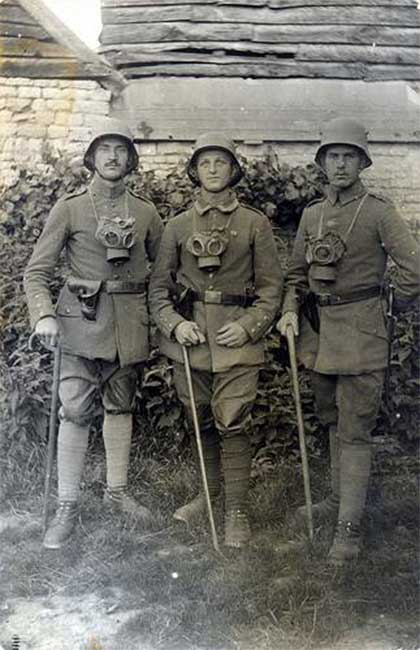 |
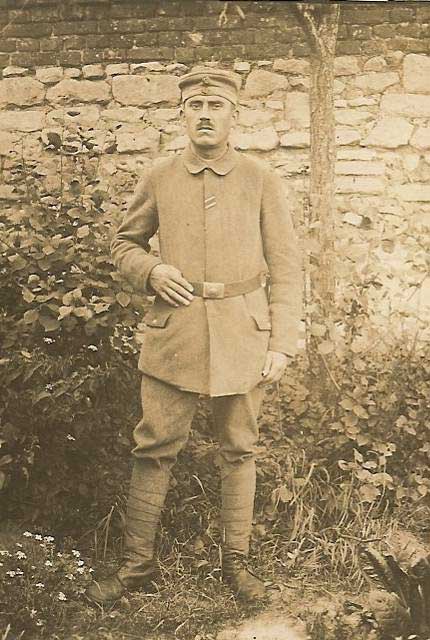 |
Rolling the Wrap Puttee
by “Pick Mattock”Reprinted from On the Wire, Vol. 1, No. 1
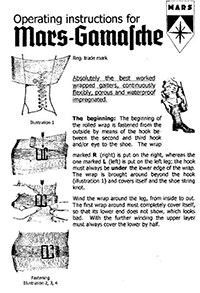 A seldom-failing mark of a newcomer to Great War reenacting is by looking at how the man’s puttees are wrapped: If white socks show or the fellow looks like he has both legs curved the same way, then you’ve got a tenderfoot. The solution is simple: Wrap your puttees the way the experts do.
A seldom-failing mark of a newcomer to Great War reenacting is by looking at how the man’s puttees are wrapped: If white socks show or the fellow looks like he has both legs curved the same way, then you’ve got a tenderfoot. The solution is simple: Wrap your puttees the way the experts do.
The secret is to begin your wrap at your ankle, above the shoe top or overlapping the shoe top just a bit. The end of the puttee should be placed upon the inside of the ankle, or perhaps just in front of the lacing of the shoe. Experience will soon show you which area is better so that the upper end of the wrap finishes at the side or rear of the calf out of sight.
Then, begin wrapping the puttee downward. That’s right, downward. Cover the shoe top and the bump made by the knot of the laces. (The laces have previously been tucked into the tops of the shoes so they won’t show below the puttee) When you have reached the top of the instep where the shoe begins to swell outward broadly, wrap the puttee neatly and parallel with the ground, then start up the leg. Each turn should be about 1 inch above the bottom of the previous wrap.
The rolled puttee should be pulled tautly away from the leg to maintain tension on the wrap. This gives a tight fit, which will: (a) hold the puttee to the leg, and (b) give support to the calf of the leg.
The final wrap should be neatly parallel with the ground, with the 1-inch tape band lying neatly upon itself in the center of the wrap, and the free end tucked neatly under the tight band. The triangular point of the wrap should be out of sight on the side or back of the calf, as mentioned before.
Now take a look at yourself in the mirror. Dummkopf, did you wrap both legs from left to right? Always wrap from the inside of the leg, around the front, toward the outside of the leg. Ne c’est pas?
Now it’s time to learn yet another secret—how to roll the puttees for storage. For when it IS time to store the dry puttee, it is rolled up with the tape end in the center! The tape hangs free as the puttee is carefully rolled without wrinkles upon itself.
When the puttee is completely rolled up, the tape is wrapped without wrinkles, perpendicular to the cylinder: i.e. across the top, down the curved side, across the bottom, and up the curved side, then neatly tucked under itself! An awful lot of words to explain such a simple thing, but then, some of you blokes ‘ave an orful ‘ard time getting’ an idea into yer loaf a’ bread.

